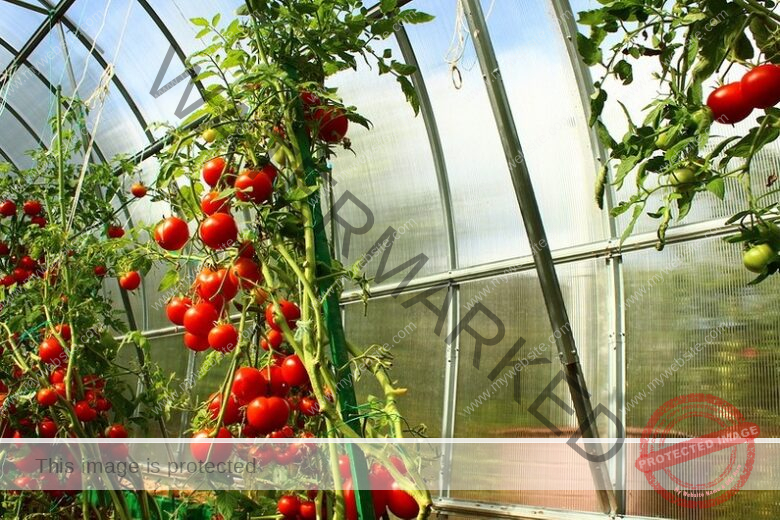Cotton plantation is a complex process that requires careful attention to various agronomic practices. In this comprehensive guide, we will explore the 12 essential agronomic practices that are crucial for successful cotton cultivation.
By understanding and implementing these practices, farmers and growers can optimize their cotton plantation and achieve higher yields. So let’s dive into the 12 agronomic practices on cotton plantation that will set you up for success!
12 Agronomic Practices on Cotton Plantation [Success Guide]
1. Soil Preparation
To lay a solid foundation for your cotton plantation, proper soil preparation is vital. Begin by testing the soil to determine its nutrient content and pH levels. Based on the results, amend the soil with organic matter or fertilizers to create an optimal growing environment for cotton.
Incorporate any necessary adjustments, such as lime for pH correction or additional nutrients, well before planting.
Read Also: 12 Best Agronomic Practices On Sugarcane Plantation
2. Seed Selection
Selecting high-quality cotton seeds is essential for a successful plantation. Choose seeds that are disease-resistant, have a high germination rate, and are suitable for your specific climatic conditions. Consult with local agricultural experts or reputable seed suppliers to ensure you acquire the best seeds for your cotton plantation.
3. Planting Time and Density
The timing of planting plays a crucial role in cotton cultivation. It is essential to plant cotton seeds at the right time when the soil temperature and weather conditions are favorable. Additionally, determining the appropriate plant density is crucial for optimizing yield. Consult local recommendations or experts to determine the ideal planting time and density for your region.
Read Also: 12 Best Agronomic Practices On Cassava Plantation
4. Irrigation Techniques
Water is a vital component for cotton plant growth and development. Implementing proper irrigation techniques is necessary to ensure the plants receive adequate moisture throughout their growth stages.
Consider factors such as soil type, climate, and plant requirements to determine the most suitable irrigation method, whether it’s drip irrigation, furrow irrigation, or another technique.
5. Nutrient Management
Cotton plants require a balanced supply of essential nutrients to thrive. Implement a comprehensive nutrient management plan that includes regular soil testing and appropriate fertilization practices.
The application of nitrogen, phosphorus, and potassium, along with micronutrients, should be based on the specific requirements of your cotton plantation.
Read Also: 12 Best Agronomic Practices On Yam Plantation [Yam Farming Guide]
6. Weed Control
Weeds compete with cotton plants for nutrients, water, and sunlight, making effective weed control crucial. Employ a combination of cultural, mechanical, and chemical weed control methods to manage weed growth.
Timely cultivation, mulching, and the judicious use of herbicides can help suppress weed populations and promote healthy cotton growth.
Read Also: 12 Best Agronomic Practices On Coconut Farm [Coconut Farming Guide]
7. Pest and Disease Management
Cotton crops are susceptible to various pests and diseases that can significantly impact yield. Regular scouting and monitoring are necessary to identify potential pest or disease outbreaks early on.
Implement integrated pest management strategies, which may include cultural practices, biological control agents, and targeted pesticide applications when necessary.
8. Crop Rotation
Practicing crop rotation can benefit cotton plantations in several ways. It helps break pest and disease cycles, improves soil health, and reduces the risk of yield loss. Rotate cotton with other crops such as legumes or cereals to diversify the cropping system and enhance overall productivity.
Read Also: 12 Best Agronomic Practices On Plantain Farm
9. Pruning and Thinning
Pruning and thinning promote better airflow and light penetration within the cotton canopy, reducing the risk of disease and enhancing boll development. Remove excessive vegetative growth and thin out crowded areas to optimize the distribution of resources among the plants.
10. Harvesting Techniques
Proper harvesting techniques ensure minimal yield losses and preserve the quality of the harvested cotton. Harvesting should be done when the bolls are mature and ready for picking.
Employ mechanical or manual harvesting methods, depending on the scale of your cotton plantation and the availability of machinery.
Read Also: 12 Best Agronomic Practices On Cocoa Plantation
11. Post-Harvest Handling
After harvesting, it is crucial to handle the cotton properly to prevent degradation or contamination. Remove debris and foreign matter from the harvested cotton and store it in a clean and dry environment.
Implement appropriate storage and preservation techniques to maintain the quality of the cotton until it is ready for further processing.
12. Record Keeping and Analysis
Maintaining detailed records of agronomic practices, inputs, and yields is essential for improving future cotton plantations. Regularly analyze the data collected to identify areas for improvement and make informed decisions for subsequent seasons. Keep records of crop rotation schedules, pest and disease incidences, fertilization practices, and other relevant information.
Read Also: 12 Best Agronomic Practices For Oil Palm Farm [Oil Palm Success Guide]
How often should I water my cotton plants?
The frequency of watering cotton plants depends on various factors such as soil type, weather conditions, and plant requirements. However, on average, cotton plants require around 1 inch of water per week during the growing season.
Can I use organic fertilizers for cotton plantation?
Yes, organic fertilizers can be used in cotton plantation. They provide slow-release nutrients, improve soil health, and promote sustainable farming practices.
What are some common pests that affect cotton crops?
Common pests that affect cotton crops include bollworms, aphids, whiteflies, and thrips. Implement integrated pest management strategies to control these pests effectively.
How long does it take for cotton plants to mature?
The time taken for cotton plants to mature varies depending on the cotton variety and growing conditions. Generally, it takes around 120 to 150 days from planting to harvest.
Can I grow cotton in cold climates?
Cotton is a warm-season crop that requires a frost-free period to grow successfully. It is not suitable for cultivation in cold climates with short growing seasons.
Is crop rotation necessary for cotton plantations?
Crop rotation is highly recommended for cotton plantations. It helps break pest and disease cycles, improves soil health, and enhances overall sustainability.
Conclusion
Implementing the 12 agronomic practices on cotton plantation discussed in this guide is crucial for achieving success in cotton cultivation. From soil preparation to post-harvest handling, each practice plays a vital role in optimizing yield and ensuring the overall health of the cotton plants.
By adopting these practices and continually learning from your experiences, you can enhance your cotton plantation and achieve desirable results. Happy planting!




